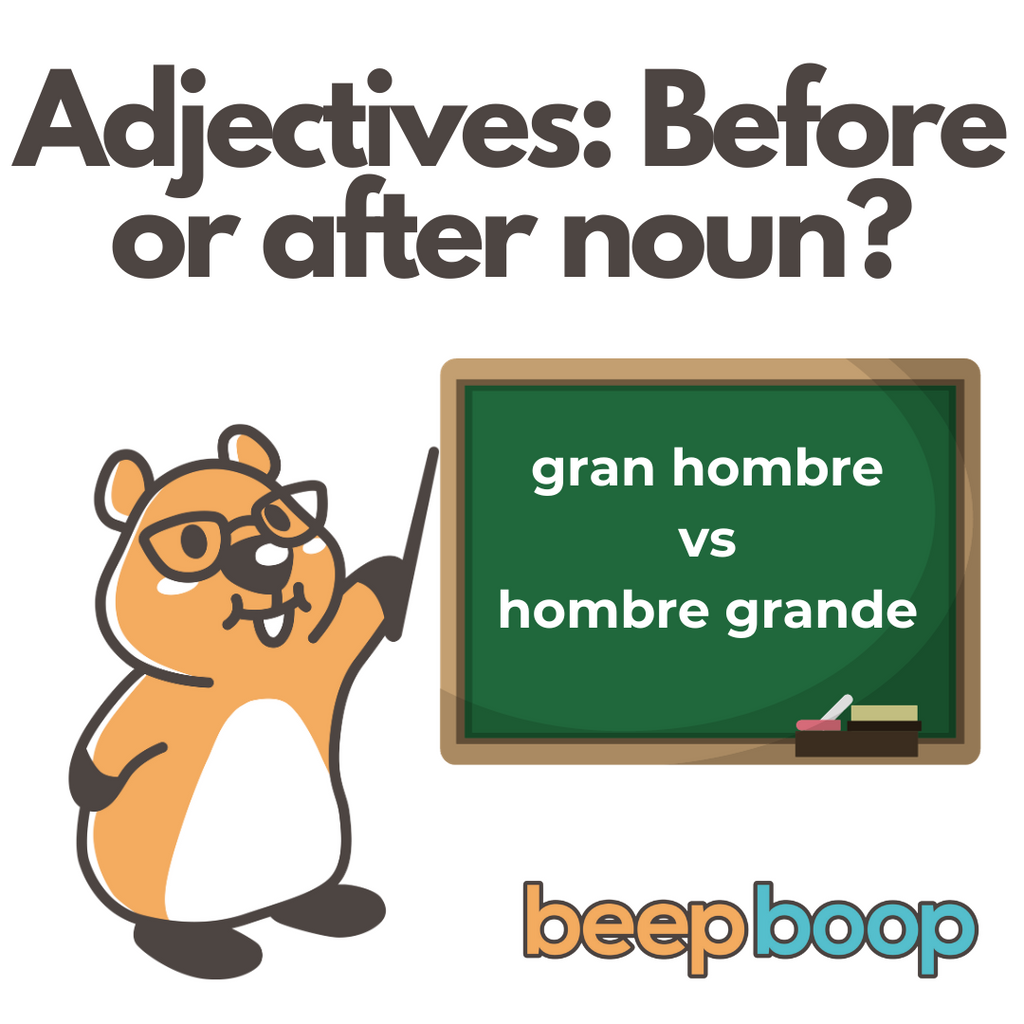Spanish, like any language, has its unique rules and nuances, especially concerning the placement of adjectives. While the common guideline is that adjectives follow nouns, there are notable exceptions. Ever wondered why you sometimes encounter "gran hombre" instead of "hombre grande"? Let's delve into the reasons and explore the intricacies of adjective positioning in Spanish. Read the below and then book a free Drill to practice live with our native Spanish instructors.
In Spanish, the "typical" order of adjectives is after the noun they modify (e.g., "un libro interesante" – an interesting book). However, there are situations where adjectives can or should precede the noun. Here's a breakdown:
-
Change in Meaning: Some adjectives change their meaning depending on their placement.
- "Viejo" before a noun might mean "former" (mi viejo amigo = my old (former) friend), while after the noun, it means "old in age" (un amigo viejo = an elderly friend).
- "Nuevo" before a noun means "another" or "different" (nueva película = another/different movie), but after a noun, it means "brand new" (película nueva = brand-new movie).
-
Subjective vs. Objective Qualities: When an adjective comes before the noun, it often conveys a subjective or inherent quality, making the statement more emotional, vague, or general. When it comes after, it's typically more objective or specific.
- "Gran hombre" (great man) is more general and might refer to the intrinsic greatness of a man. "Hombre grande" (big man) is more specific and likely refers to the physical size of the man.
-
Common Expressions: Some fixed expressions always have the adjective before the noun. Examples include "alta sociedad" (high society) or "vieja escuela" (old school).
-
Poetic or Emphatic Use: Adjectives might be placed before the noun for stylistic or poetic reasons to emphasize or beautify the expression.
- "Dulce niña" (sweet girl) has a more poetic feel than "niña dulce."
-
Limiting Adjectives: Certain adjectives like "otro" (other), "cierto" (certain), and "mismo" (same) usually go before the noun. For example, "otro día" (another day) or "cierta vez" (a certain time).
-
Numbers: Numbers typically go before the noun, e.g., "tres libros" (three books).
-
Superlatives and Comparatives: Generally, superlatives go before the noun, such as "el mejor libro" (the best book).
It's also worth noting that while the rules can guide you, there's always a certain level of fluidity in language. Context, nuance, regional variations, and individual choice play roles in determining the placement of adjectives. As you become more familiar with Spanish, you'll develop an intuitive sense for adjective placement.
Practice what you've just learned in a free Drill

Beepboop offers live Drills taught by native Spanish speakers that you can observe for free. Observing is a great way to train your ear while expanding your Spanish vocab and knowledge of Latin American and Spanish culture.
Observing is great, but if you really want to speak Spanish fluently, you'll need to practice with native Spanish speakers as much as possible... Like every day! Thankfully, Beepboop Pro exists.
How Beepboop Pro Works
- Improve your spoken Spanish rapidly by joining one 25-minute Pro Drill every day
- During a Pro Drill, a native Spanish-speaking instructor guides you and up to 3 students through rapid (yet low-stress) role-plays simulating real-life scenarios
- Pro Drills run morning till late at night. Hop into an ongoing one or book ahead
- Prepare for hours before each Pro Drill or just show up and wing it! Our instructors will meet you where you are


